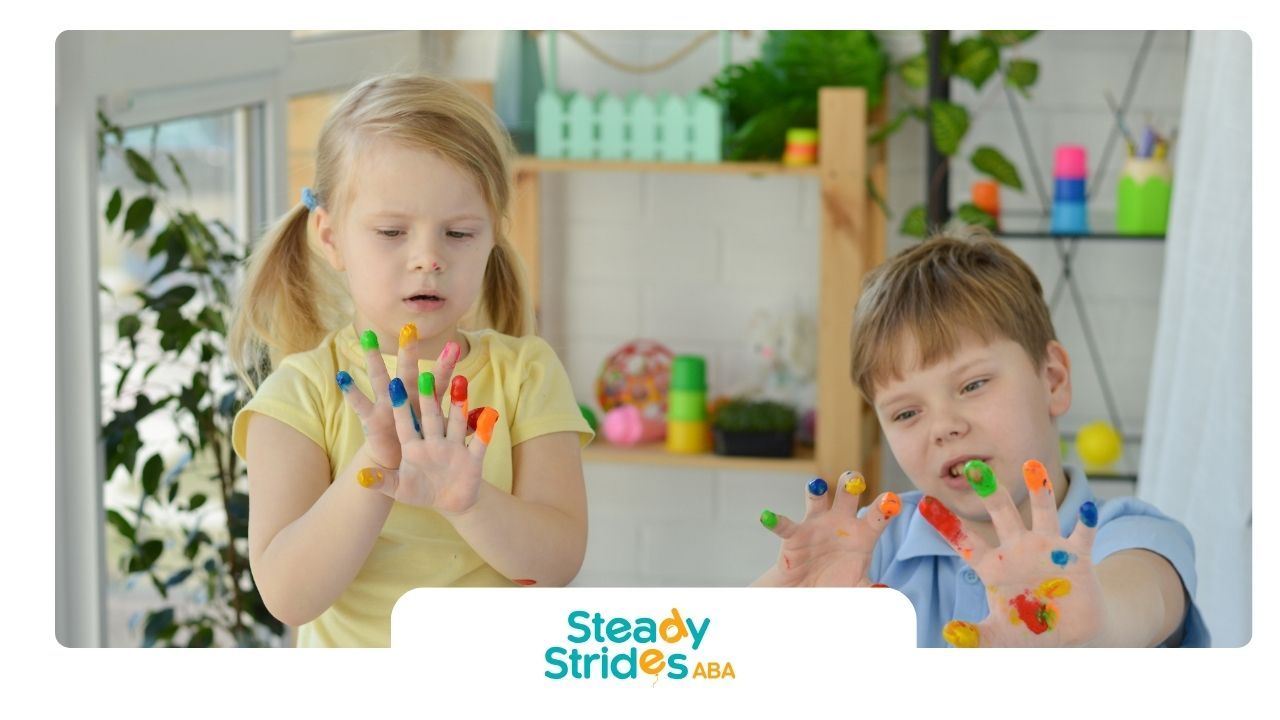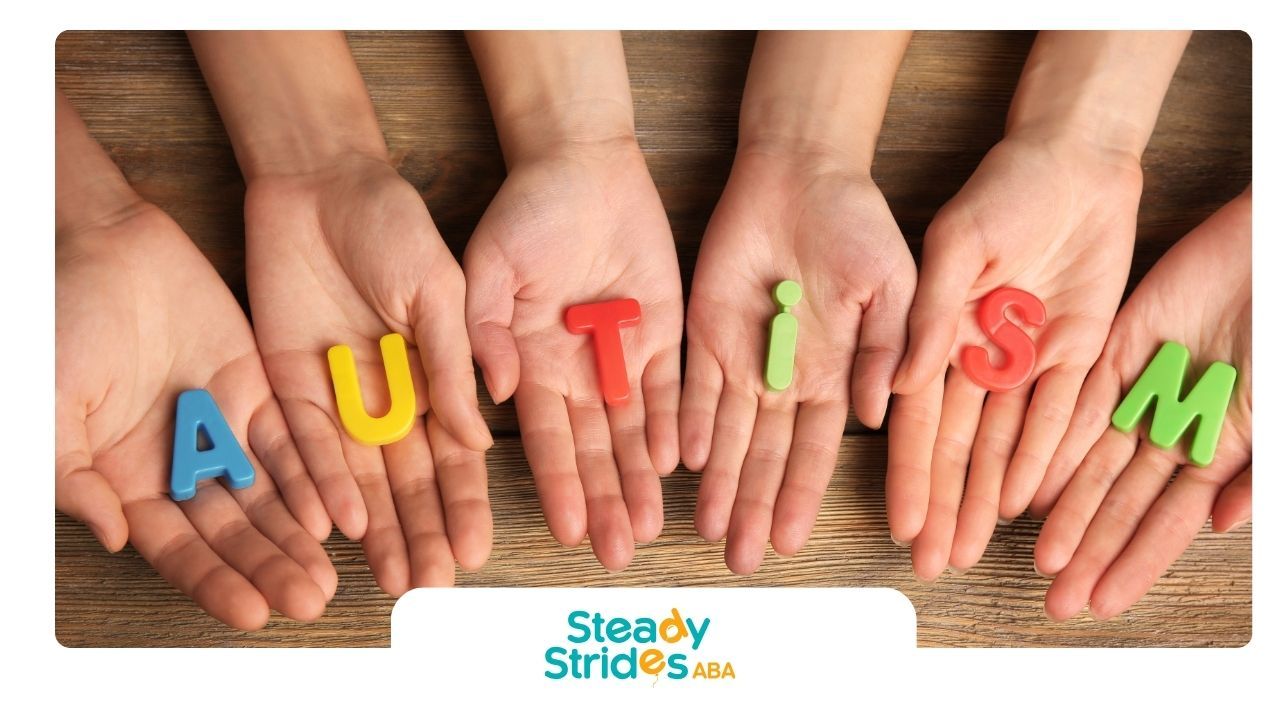How Penguin Pebbling Relates to Autism
Penguin pebbling demonstrates a form of non-verbal communication that has strong social implications, and its simplicity can offer insights into how we view social connections in the human world. For individuals with autism, understanding social cues, making connections, and forming bonds can sometimes be challenging. Just like the penguins rely on simple gestures to form lasting bonds, children with autism often need support in interpreting and responding to social signals.
In Applied Behavior Analysis (ABA) therapy, one of the key objectives is to help children with autism navigate social interactions in ways that are meaningful to them. While these interactions may not involve penguin pebbles, they often focus on small, tangible actions—like learning to offer a toy, share an item, or respond to a social prompt—that, over time, lead to stronger social bonds and better communication.
The Importance of Small Gestures in Social Communication
Much like how a pebble serves as a tool for penguins to communicate affection and trust, small social gestures can help children on the autism spectrum bridge the gap between themselves and their peers. Simple actions, such as making eye contact, smiling, or offering an item, are often learned and reinforced in ABA therapy to build foundational social skills.
For many children with autism, the subtleties of social interaction can be overwhelming. Recognizing that seemingly small gestures can hold significant meaning is essential for parents, caregivers, and therapists. Teaching and reinforcing these small behaviors can help children develop their social and communication skills in a way that feels natural and attainable.
Social Reciprocity: Teaching the Concept of “Pebbles” in ABA Therapy
In the context of ABA therapy, therapists often work on social reciprocity—the give and take of social interactions. Just as penguin pebbling illustrates a reciprocal act between two individuals, ABA therapy uses reinforcement techniques to teach children how to engage in reciprocal behaviors with others.
Children with autism often have difficulty understanding unspoken social rules, which makes teaching social reciprocity a priority in ABA therapy. By breaking down complex social situations into smaller, manageable steps, therapists can teach children how to engage in back-and-forth exchanges, whether through verbal communication, gestures, or shared play.
In these moments, small acts (the “pebbles” of social behavior) are introduced and reinforced. For example, learning to ask for help, say “thank you,” or respond to a greeting can feel like monumental tasks for a child with autism. Over time, these small pebbles build the foundation for more meaningful social connections, much like how penguins build their nests, one pebble at a time.
How ABA Therapy Reinforces Positive Social Behaviors
Penguin pebbling is not only about giving but also about receiving. The female penguin’s acceptance of the pebble signals her interest in forming a bond. Similarly, ABA therapy often focuses on the importance of positive reinforcement to encourage desired behaviors. When a child with autism engages in a social behavior, like sharing a toy or making eye contact, therapists and caregivers can offer positive reinforcement—be it verbal praise, a token reward, or another form of encouragement.
Positive reinforcement strengthens the likelihood that the child will repeat the behavior, just as the acceptance of a penguin’s pebble reinforces the bond between two penguins. This principle is core to ABA therapy and helps children learn which behaviors are socially appropriate and rewarding.
Building Communication Skills Through Gestures and Play
For many children on the autism spectrum, verbal communication may not come easily, and in some cases, non-verbal communication is a more natural way of expressing themselves. Just as penguins use pebbles as a non-verbal means of communicating, children with autism can learn to use gestures, visual supports, or alternative communication systems, such as picture exchange communication systems (PECS), to interact with others.
In ABA therapy, play is often used as a tool to teach communication and social interaction. Play-based therapy encourages children to engage with others in a structured environment that feels enjoyable rather than intimidating. For instance, a child might be encouraged to offer a toy (their version of a pebble) to a peer or therapist, reinforcing the idea of shared interaction.
Through these interactions, children with autism can learn the significance of gestures and play in building relationships, much like penguins use their pebbles to foster connection.
Encouraging Social Bonding and Emotional Connections
Penguins form strong bonds with their mates, and over time, these bonds lead to successful co-parenting and the raising of young. For children with autism, forming emotional bonds with peers, family members, and caregivers can take time and effort, but the rewards are just as meaningful.
ABA therapy helps children develop the skills necessary for emotional connection, whether through shared activities, communication, or small acts of kindness. Just as a penguin’s gesture leads to a strong, nurturing bond, these learned social behaviors can foster deeper emotional connections for children with autism.
The Role of Parents and Caregivers in Social Development
Parents and caregivers play a pivotal role in supporting their child’s social development. Much like a penguin carefully selects the right pebble to offer, parents can help their child by selecting the right social opportunities and reinforcing positive behaviors. By working in collaboration with ABA therapists, parents can help their children apply what they’ve learned in therapy to real-world situations.
Whether it's guiding a child through a social interaction or offering encouragement when they successfully engage with a peer, parents and caregivers are essential in helping their children develop the social skills they need.
Practical Tips for Parents: Encouraging Social Skills at Home
- Model Social Behaviors: Children learn by observing the actions of others. Parents can model appropriate social behaviors, such as greeting others, sharing items, or engaging in conversation.
- Reinforce Small Gestures: Celebrate and reinforce small social gestures, such as making eye contact, sharing toys, or saying “please” and “thank you.” Use positive reinforcement to encourage these behaviors.
- Create Social Opportunities: Provide your child with opportunities to interact with peers in a structured, supportive environment. Playdates, family gatherings, or structured playgroups can offer safe spaces for practicing social skills.
- Use Visual Supports: For children who struggle with verbal communication, visual supports such as picture cards, charts, or social stories can help them understand social expectations and respond accordingly.
- Practice Turn-Taking: Engaging in turn-taking games can help your child learn the concept of give-and-take in social interactions. Simple games, such as rolling a ball back and forth, can teach patience and reciprocity.
Final Thoughts
Penguin pebbling is a simple yet profound example of how social bonds are formed through small acts of communication. For children with autism, these small gestures can be the building blocks of more significant social connections. Through ABA therapy, children can learn to engage in reciprocal behaviors, develop communication skills, and foster meaningful relationships.
Steady Strides is dedicated to helping children on the autism spectrum navigate their social world one step at a time. Whether it's learning to share, make eye contact, or engage in play, every gesture can be a step toward building lasting connections—just like a penguin’s pebble can form the foundation for a strong bond.
What Is Penguin Pebbling?
Penguin pebbling refers to a fascinating courtship ritual practiced by Adélie and Gentoo penguins. In this ritual, a male penguin selects the smoothest, most appealing pebble and offers it to a female as a gesture of interest. If the female accepts the pebble, it’s a sign of her willingness to form a bond. This simple, yet profound, act of pebble-giving helps form relationships and plays a crucial role in building nests where they raise their young.
Penguin pebbling is more than just an adorable behavior—it’s a clear example of how social interactions can be rooted in small, significant gestures. While it may seem like a charming animal behavior with little relevance to humans, its essence speaks to key elements of communication, relationships, and social interaction. These elements can offer parallels when understanding social behaviors in children, especially those on the autism spectrum.













